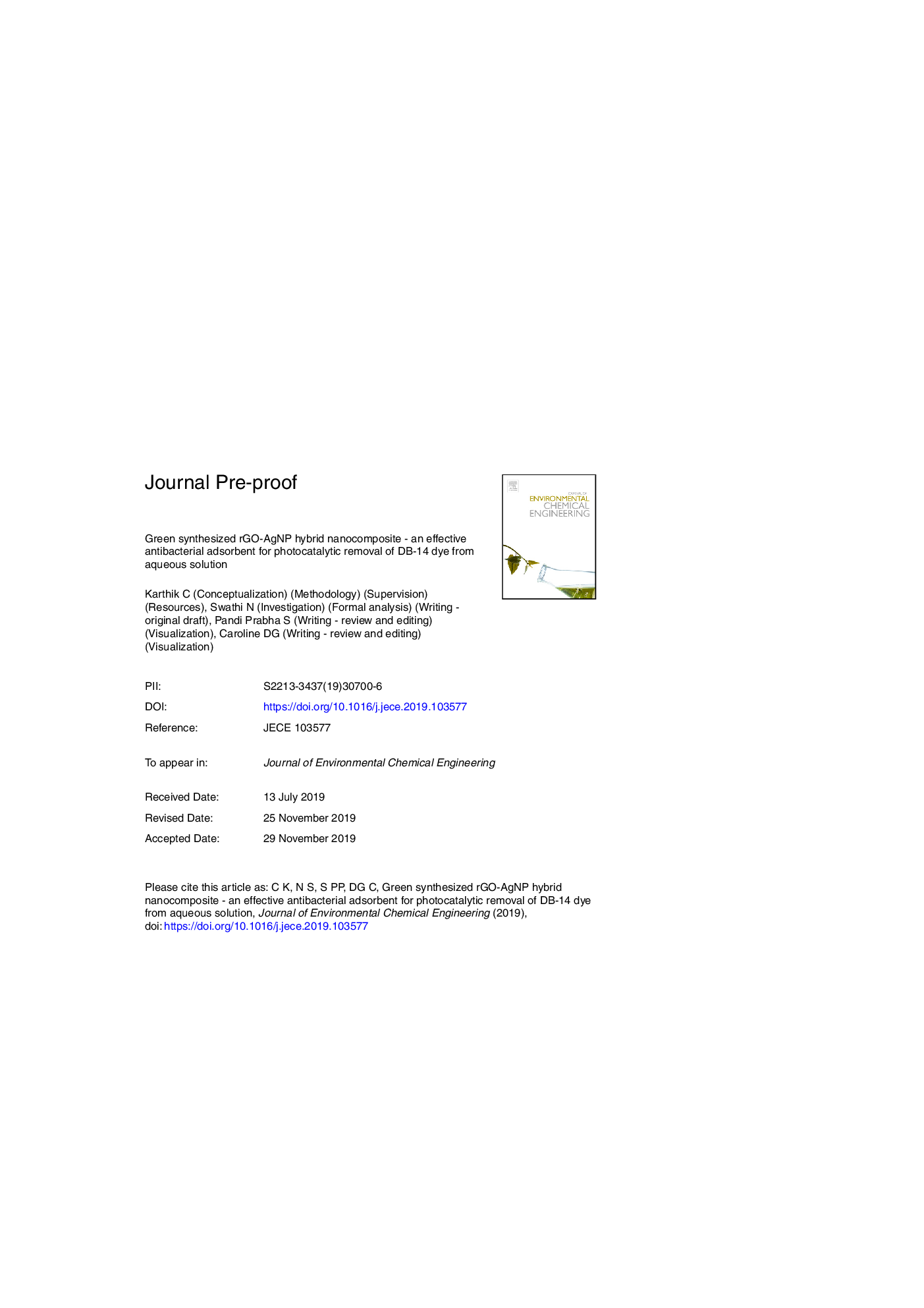| Article ID | Journal | Published Year | Pages | File Type |
|---|---|---|---|---|
| 13417179 | Journal of Environmental Chemical Engineering | 2020 | 26 Pages |
Abstract
In this study, a facial synthesis of a reduced graphene oxidesilver nanoparticle hybrid nanocomposite (rGO-AgNP) was carried out from aqueous extract of Brassica nigra by the reduction of graphene oxide and silver ions simultaneously. The synthesized nanocomposite was characterized using UV-vis spectroscopy, X-ray diffraction, scanning electron microscope, energy dispersive x-ray spectroscopy, and Fourier transform infrared spectroscopy. The antibacterial activity examination of rGO-AgNP nanocomposite against both gram negative and gram positive bacterial strains ensured enhanced antibacterial effect. The phytosynthesized nanocomposite acts as a photocatalytic agent for the removal of dye thereby finding its way in water treatment. Direct blue-14 (DB-14) dye was used to study the adsorption efficiency of synthesized nanocomposites. The parameters that influence the rate of adsorption such as effect of time, pH, light source and adsorbent dosage were investigated. The perfect recovery of adsorbent after reaction and its unchanged efficiency for cyclic use showed that it will be an economically and environmentally friendly photocatalyst. Isotherm models like Langmuir and Freundlich were used to assess the capability of adsorbent on adsorption. The outcomes show that the rGO-AgNP composites are effectual in adsorbing dye and have a promising effect on water treatment.
Related Topics
Physical Sciences and Engineering
Chemical Engineering
Chemical Engineering (General)
Authors
Karthik C, Swathi N, Pandi Prabha S, Caroline DG,
